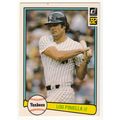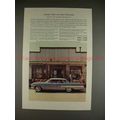Queen Elizabeth Silver Jubilee postcard 1977
- Condition : Used
- Dispatch : 2 Days
- Brand : None
- ID# : 36237674
- Quantity : 1 item
- Views : 3201
- Location : United Kingdom

- Seller : justthebook (+1704)
- Barcode : None
- Start : Sat 18 Dec 2010 22:50:50 (EDT)
- Close : Run Until Sold
- Remain : Run Until Sold
Checks/Cheques
 for 1 item(s) edit
for 1 item(s) edit
Shipping Calculator
More Listings from This Seller view all
Seller's Description
- Postcard
- Picture / Image: Silver Jubilee 1952-1977. Queen Elizabeth II and the Duke of Edinburgh
- Publisher: FISA, Great Britain
- Postally used: no
- Stamp: n/a
- Postmark(s): n/a
- Sent to: n/a
- Notes & Key words:
------------------------------------------------
Postage & Packing:
UK (incl. IOM, CI & BFPO): 99p
Europe: £1.60
Rest of world (inc. USA etc): £2.75
No additional charges for more than one postcard. You can buy as many postcards from me as you like and you will just pay the fee above once. (If buying postcards with other things such as books, please contact or wait for invoice before paying).
Payment Methods:
UK - PayPal, Cheque (from UK bank) or postal order
Outside UK: PayPal or Google Checkout ONLY please. NO non-UK currency checks or money orders (sorry).
NOTE: All postcards are sent in brand new stiffened envelopes which I have bought for the task. These are specially made to protect postcards and you may be able to re-use them. In addition there are other costs to sending so the above charge is not just for the stamp!
----------------------------------------------
Text from the free encyclopedia WIKIPEDIA may appear below to give a little background information:
*************
The Silver Jubilee of Elizabeth II marked the twenty-fifth anniversary of Queen Elizabeth II's accession to the throne of the United Kingdom, Canada, Australia, New Zealand, and other Commonwealth realms. It was celebrated with large-scale parties and parades throughout the United Kingdom and the Commonwealth throughout 1977, culminating in June with the official "Jubilee Days," held to coincide with the Queen's Official Birthday. The anniversary date itself was commemorated in church services across the land on 6 February 1977, and continued throughout the month. In March, preparations started for large parties in every major city of the United Kingdom, as well as for smaller ones for countless individual streets throughout the country.
No monarch before Elizabeth II visited more of the United Kingdom in such a short span of time (the trips lasted three months). All in all, the Queen and her husband Prince Philip visited a total of 36 counties. The trip started with record crowds gathering to see the Royals in Glasgow on 17 May. After moving to England (where a record one million spectators came to greet the couple in Lancashire) and Wales, the Queen and Prince Philip wrapped up the first of their trips with a visit to Northern Ireland. Among the places visited during the national trips were numerous schools, which were the subject of a television special hosted by presenter Valerie Singleton.
Later in the summer, the Queen and Prince Philip embarked on a Commonwealth visit that first brought them to island nations such as Fiji and Tonga, following up with longer stints in New Zealand and Australia, with a final stop in Papua New Guinea before going on to the British holdings in the West Indies. The final stop on the international tour was a trip to Canada, in which Prince Charles joined the couple to greet the crowds.
On 6 June, the Queen lit a bonfire beacon at Windsor Castle, whose light spread across the night in a chain of other beacons throughout the country. On 7 June, crowds lined the procession to St Paul's Cathedral, where the royal family attended a Service of Thanksgiving alongside many world leaders, including United States President Jimmy Carter, as well as all of the living former Prime Ministers, stretching back from Harold Macmillan all the way to Harold Wilson. The service was followed by lunch in the Guildhall, hosted by the Lord Mayor of the City of London Peter Vanneck. At the reception, the Queen was quoted as saying,
| “ | When I was twenty-one I pledged my life to the service of our people and I asked for God's help to make good that vow. Although that vow was made in my salad days, when I was green in judgement, I do not regret nor retract one word of it. |
After the luncheon, the procession drove the royals down The Mall to Buckingham Palace, where an estimated one million people lined the pavements to see the family wave to onlookers. A further 500 million people around the Commonwealth watched the day's events on live television. 7 June was the day that streets and villages threw elaborate parties for all their residents, to honour the Queen and their country's rich history. Many streets strung bunting (the little flags were usually modelled in pattern after the Union Flag) from rooftop to rooftop across the street. In addition to parties, many streets decorated motor vehicles as historical events from Britain's past, and drove them about town, organising their very own parades. In London alone there were over 4000 organised parties for individual streets and neighbourhoods. Throughout the entire day, onlookers were greeted by the Queen many times as she made several appearances for pictures from her balcony.
On 9 June, the Queen made a Royal Progress trip via boat down the River Thames from Greenwich to Lambeth, in a re-enactment of the famous progresses taken by Queen Elizabeth I. On the trip, the Queen officially opened the Silver Jubilee Walkway and the South Bank Jubilee Gardens, two of numerous places named after the festivities. In the evening, the Queen presided over a fireworks display and was subsequently taken by a procession of lighted carriages to Buckingham Palace, where she greeted onlookers yet again from her balcony.
Before, during, and after the events of Jubilee, the event was addressed in many mediums of popular culture throughout the Commonwealth.
The most infamous event marking the Jubilee was the Sex Pistols' release of the vehement anti-monarchy song "God Save the Queen." The song was seen as an attack on both the royal family (which the Sex Pistols called a "fascist regime") and the United Kingdom as a nation. Originally titled "No Future," the end of the song calls for an end to "England's dreaming," as there will be "no future." On 7 June, the high day of celebrations, the Sex Pistols attempted to interrupt the Jubilee festivities by playing their song from a boat which was named the Queen Elizabeth on the River Thames. Police officials forced the boat to dock and a scuffle with fans ensued, resulting in the arrest of several people associated with the Sex Pistols, such as the band's manager Malcolm McLaren, artist Jamie Reid, clothing designer Vivienne Westwood and Bromley Contingent members Tracie O'Keefe and Debbie Juvenile. Despite overwhelming public approval for the royal family, there was enough discontent within the British public that many agreed with the song's message, and subsequently bought enough copies during Jubilee Week to rocket "God Save the Queen" to #2 on the UK pop charts (amid claims, never proved or disproved, that it had sold enough copies to hit #1 but had been kept off for political reasons). During the festivities and in the immediate aftermath, radio stations were under strict orders not to play the tune.
The soap opera Coronation Street wrote an elaborate Jubilee parade into the storyline, having Rovers' Return Inn manageress Annie Walker dress up in elaborate costume as Elizabeth I. Ken Barlow and "Uncle Albert" played Sir Edmund Hillary and Sherpa Tenzing respectively. The Jubilee also figured into the time-travel storyline of a 1983 Doctor Who story, Mawdryn Undead.
Various places were named after the Jubilee. The under-construction Fleet Line of the London Underground was re-named the Jubilee Line, though it did not open until 1979. Other places named after the Jubilee were the Silver Jubilee Walkway and the South Bank Jubilee Gardens.
Apart from names, the Jubilee also saw the borough of Derby granted the status of a city.
Similar parties and parades were planned for the Golden Jubilee in 2002.
aa
Listing Information
| Listing Type | Gallery Listing |
| Listing ID# | 36237674 |
| Start Time | Sat 18 Dec 2010 22:50:50 (EDT) |
| Close Time | Run Until Sold |
| Starting Bid | Fixed Price (no bidding) |
| Item Condition | Used |
| Bids | 0 |
| Views | 3201 |
| Dispatch Time | 2 Days |
| Quantity | 1 |
| Location | United Kingdom |
| Auto Extend | No |













